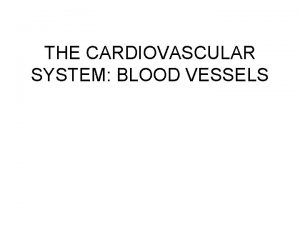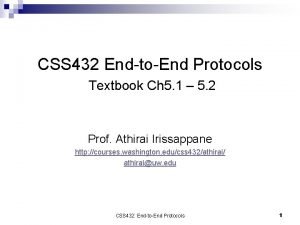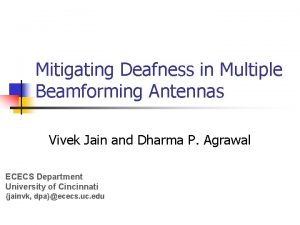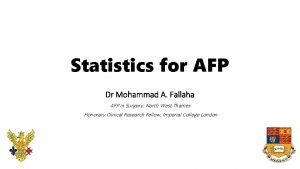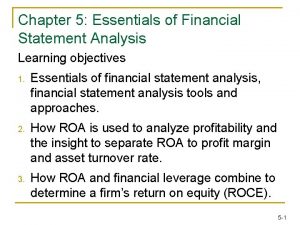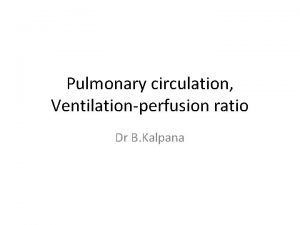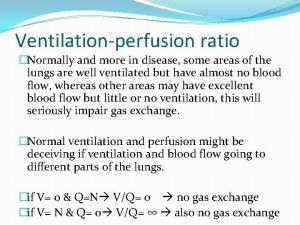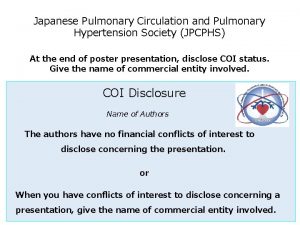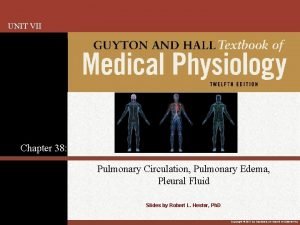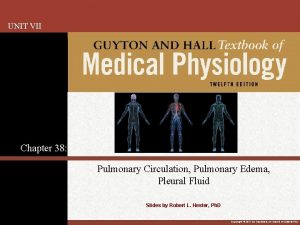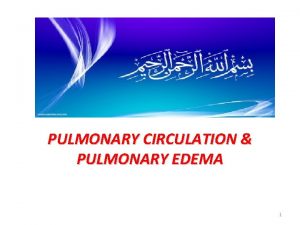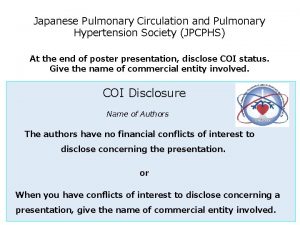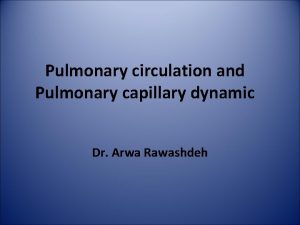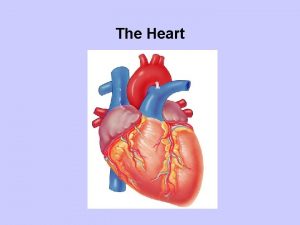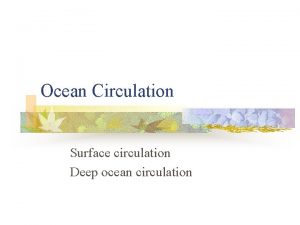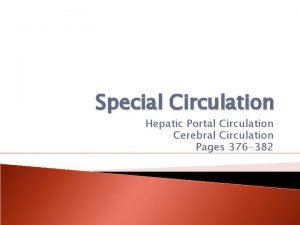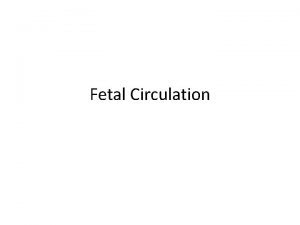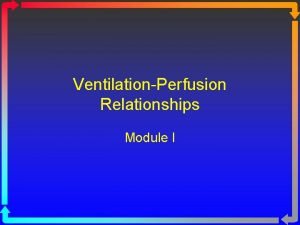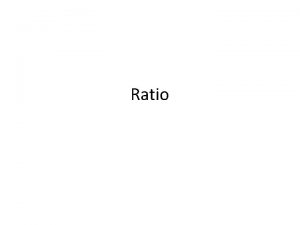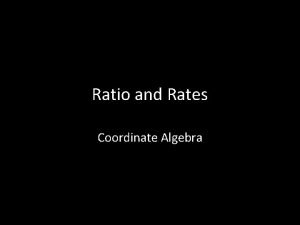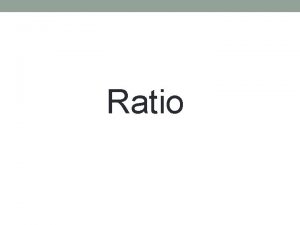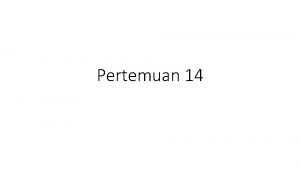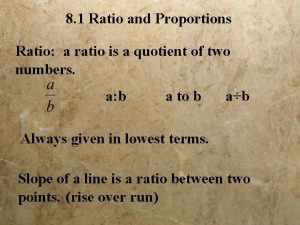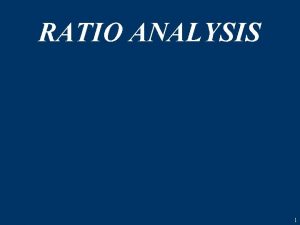Pulmonary circulation Ventilationperfusion ratio At the end of





























- Slides: 29

Pulmonary circulation, Ventilation-perfusion ratio

At the end of class students should be able to: 1. Explain the special features of pulmonary circulation 2. List the factors affecting pulmonary blood flow 3. List the importance of ventilation-perfusion ratio.

Pulmonary circulation

• Systemic circulation-high pressure, greater resistance to blood flow • Pulmonary circulation –low pressure, low resistance


Functions of pulmonary circulation • • Gas exchange Serves as filter Metabolic functions Serves as blood reservoir

Special features of pulmonary circulation • Pulmonary artery and its branches-thin walls and less smooth muscles • Mean arterial pressure-15 mm. Hg • More compliant • Accommodate large amount of blood. • Pulmonary veins-more complaint • Pulmonary capillaries-does not form capillary network.

Pulmonary vascular resistance is very low. • Helps in uptake of oxygen and removal of carbon-dioxide • Facilitates the diffusion of gases across respiratory membrane • Prevents pulmonary edema.

Blood Flow Through the Lungs and Its Distribution • • Approximately 500 ml of blood : Pulmonary arteries-150 ml Pulmonary veins-270 ml Pulmonary capillaries-80 ml

Pulmonary vessels • Alveolar vessels • Extra alveolar vessls.

Factors affecting blood flow: 1. Pulmonary vascular resistance Lung volumes-high and low increases it 1. Gravity 2. Alveolar pressure 3. Arterial to venous pressure gradient

Effect of gravity • Gravity has a relatively marked effect on the pulmonary circulation. • In the upright position, the upper portions of the lungs are well above the level of the heart, and the bases are at or below it. • Consequently, in the upper part of the lungs, the blood flow is less, the alveoli are larger, and ventilation is less than at the base.

At the level of heart : 14 mm Hg At the apex of lung: 6. 6 mm Hg At the base of lung: 17. 7 mm Hg.

Mechanics of blood flow in the three blood flow zones of the lung

The zones of the lung

Diagram of normal differences in ventilation and perfusion of the lung in the upright position

Pulmonary Capillary Dynamics

Hydrostatic and osmotic forces in mm Hg at the capillary and alveolar membrane of the lungs

Pulmonary Edema • Increased capillary hydrostatic pressure • Increased alveolar surface tension • Decreased oncotic pressure.

Ventilation-Perfusion ratio • • Ratio of alveolar ventilation and the amount of the blood that perfuses the alveoli Rate of alveolar ventilation (VA) – 4. 2 liters/min Rate of alveolar perfusion (Q) =5 liters The ventilation-perfusion ratio = VA/Q = 4. 2/5 = 0. 84 Important to maintain the alveolar PO 2 & PCO 2

• When VA is normal & Q is also normal =VA/Q is normal • When VA is zero & Q is normal =VA/Q is zero • When VA is normal & Q is zero =VA/Q is infinity

• VA/Q is zero –composition of alveolar PO 2 & PCO 2 approaches to that of venous blood • VA/Q is infinity –composition of alveolar PO 2 & PCO 2 approaches to that of atmospheric air

Importance of VA/Q – important in gas exchange • At apex VA/Q is high-more ventilation relative to blood flow. • PAO 2 >PACO 2 at the apex • At the base VA/Q is low. • Thus some amount of blood circulates without getting fully oxygenated.


Effects of change in VA/Q

• Venous admixture-mixing of unoxygenated blood with oxygenated blood • Shunt or low VA/Q • Shunt-channel in which blood bypasses the lungs • Anatomical shunt-atrial or ventricular septal defect. • Physiological shunt-deoxygenated bronchial venous blood drains into oxygenated blood of pulmonary veins.

• When VA/Q is below normal Physiological shunt is increased Volume of blood does not take part in blood-gas exchange is called (physiological) shunt • When VA/Q is above normal Physiological dead space is increased • Volume of gas does not takes part in blood-gas exchange is called (physiological) dead space

Summary

References • Comprehensive Textbook of Medical physiology (Vol 2 first edition) G K Pal • Text book of medical physiology (Vol 2 6 th edition) A K Jain • Text book of medical physiology (Twelfth edition) GUYTON and HALL AEJ 29
 Types of alveoli
Types of alveoli Single circulation and double circulation
Single circulation and double circulation Single vs double circulatory system
Single vs double circulatory system Major arteries and veins of the systemic circuit
Major arteries and veins of the systemic circuit Lung blood supply
Lung blood supply Descendorektostomie definition
Descendorektostomie definition End to end delay
End to end delay End-diastolic volume vs end-systolic volume
End-diastolic volume vs end-systolic volume Yichao zhou
Yichao zhou End to end
End to end End to end delay
End to end delay Compiler front end and back end
Compiler front end and back end End to end argument
End to end argument Comet transformer
Comet transformer Explain front end and back end of compiler
Explain front end and back end of compiler End to end accounting life cycle tasks
End to end accounting life cycle tasks What is stroke volume
What is stroke volume Multiple procurement cycles
Multiple procurement cycles Fixed interval vs variable interval
Fixed interval vs variable interval Rr statistics
Rr statistics Phenotypic ratio in dihybrid cross
Phenotypic ratio in dihybrid cross Gear mechanical advantage formula
Gear mechanical advantage formula Perbedaan odds ratio dan prevalence ratio
Perbedaan odds ratio dan prevalence ratio Acid test ratio and quick ratio
Acid test ratio and quick ratio Current ratio and quick ratio
Current ratio and quick ratio 101012 bằng
101012 bằng Tỉ lệ cơ thể trẻ em
Tỉ lệ cơ thể trẻ em Chúa yêu trần thế alleluia
Chúa yêu trần thế alleluia Lời thề hippocrates
Lời thề hippocrates Hổ sinh sản vào mùa nào
Hổ sinh sản vào mùa nào



